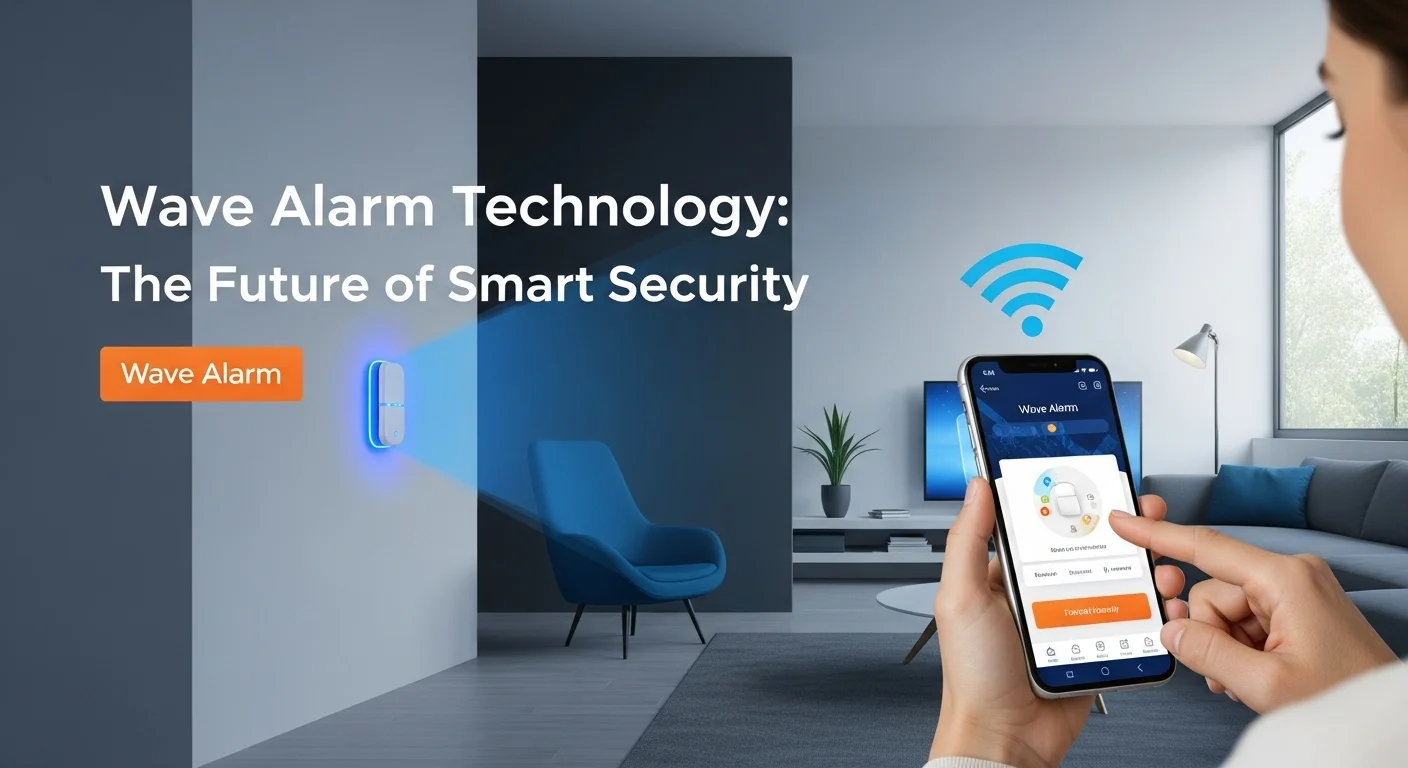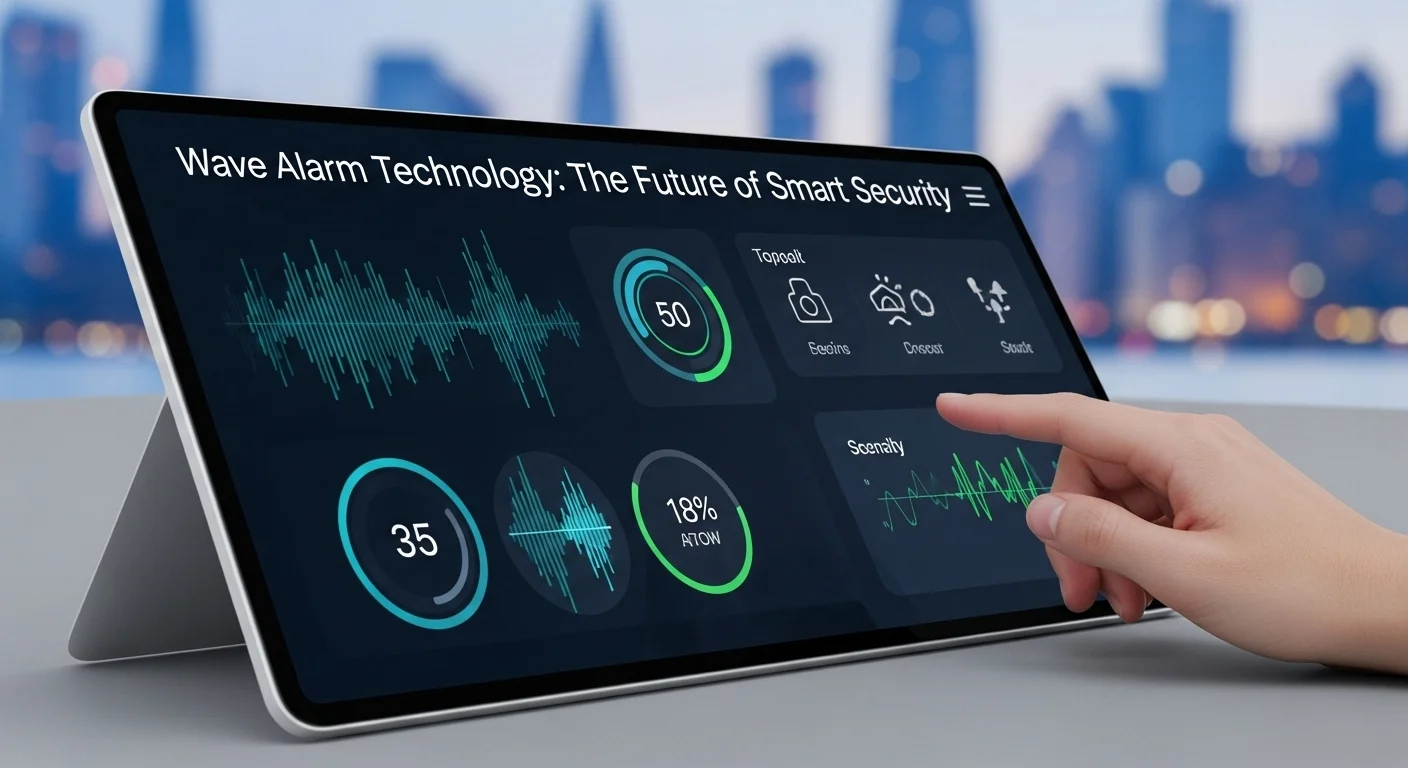Wave Alarm & Z-Wave: Your Personal Guide to Building a Smarter, Safer Home

Executive Summary
I've been installing security systems for over 15 years. I remember when 'high-tech' meant a loud siren and a keypad by the door. Today, we're in a completely different world. The concept of 'Wave Alarm' has evolved from a simple gesture on an app to the core of an intelligent, interconnected security network powered by Z-Wave. In this guide, I'll pull back the curtain on how a modern alarm system, built around a Z-Wave panel and compatible devices, creates a truly secure and automated space. Whether you're a homeowner excited to upgrade or a business owner looking for a smart security solution, I'll walk you through everything, from the basic principles to integrating with platforms like Alarm.com. Let's build something that gives you real peace of mind.
Table of Contents
Table of Contents
What is 'Wave Alarm' and Why Should You Care?
When you hear 'Wave Alarm,' you probably think of those clever phone apps that let you wave your hand to snooze your morning alarm. That's a neat trick, but in the world of home and business security, the real 'wave' is a much bigger deal. It refers to the powerful, invisible network that connects your security devices, and the most reliable and trusted one out there is Z-Wave. For years, I've seen firsthand how this technology has transformed security from a simple noisemaker into a smart, responsive ecosystem. It's the foundation for a truly modern alarm system, making top-tier security and automation accessible to everyone.
So, what makes Z-Wave special? First, it operates on a different radio frequency than your Wi-Fi or Bluetooth. Think of Wi-Fi as a crowded party where everyone is shouting to be heard. Z-Wave, on the other hand, has its own private, quiet channel. This means less interference and a far more reliable connection for critical commands, like locking your door or triggering an alarm. The second piece of magic is its 'mesh network'. Imagine you're passing a note across a large room. Instead of trying to throw it all the way, you hand it to the person next to you, who hands it to the next, and so on. Z-Wave works the same way. Every powered device, like a light switch or a smart plug, acts as a repeater, extending the network's range. The more devices you add, the stronger and more reliable your network becomes, eliminating weak spots that could compromise your security.
The Brains of the Operation: The Z-Wave Alarm Panel
At the center of it all is the Z-Wave alarm panel. This isn't just a keypad; it's the command center for your entire smart property. I've installed hundreds of panels from leading brands like Qolsys and 2GIG, and they are impressive pieces of tech. With intuitive touchscreens and dual Wi-Fi and cellular connections, they are the hub where all the Z-Wave devices report back. The control panel is what lets you create amazing automated routines. For example, when you arm the system to leave, the panel can tell your doors to lock, your thermostat to enter an energy-saving mode, and your lights to turn off. This seamless integration is what makes a Z-Wave system so powerful and intuitive.
A System That Truly Speaks Z-Wave
Modern systems don't just beep; they talk to you, announcing things like 'Front door open.' But when I say a system 'speaks Z-Wave,' I mean something deeper. It's about fluent, two-way communication. When your panel sends a command—say, to lock the front door—the lock sends a confirmation message back. If the panel doesn't get that confirmation, it knows something is wrong and tries again. This constant 'handshake' is fundamental to Z-Wave's reliability. It’s why I trust it for critical tasks that have to work every single time, without fail.
The Power of a Unified Ecosystem
A smart platform is only as good as the devices it can connect to, and this is where Z-Wave shines. With thousands of certified products from hundreds of different brands, you have incredible freedom of choice. The Z-Wave Alliance guarantees that any certified product will work with any certified controller. This is where a service like Alarm.com becomes essential. It’s a powerful cloud platform that works with top-tier hardware, like Qolsys panels, to give you amazing remote control and professional monitoring. When you look for Alarm.com compatible Z-Wave devices, you're ensuring they'll work perfectly within this robust ecosystem. You can mix and match smart locks from Schlage, thermostats from Trane, and lighting from Jasco, and control them all from one simple app on your phone. That’s the real power—building a custom system that fits your life perfectly.
Why This Matters for Your Home and Business
From a tech perspective, Z-Wave is built for security. Its low power usage means battery-powered sensors can last for years. And with its advanced S2 Security framework, it's incredibly difficult to hack, which is vital when you're talking about who has access to your property. For a business, this technology is a game-changer. I’ve seen small retail shops use it not just for security but to automate their opening and closing checklists, monitor temperatures in refrigerators, and manage employee access. You can start with a basic setup—a good Z-Wave alarm control panel and a few sensors—and add more devices as your business grows. It’s a smart investment that delivers security, efficiency, and a real return through energy savings and loss prevention.

Your Complete Guide to Designing a Z-Wave Security Solution
Alright, now that you understand the 'what' and 'why,' let's get into the 'how.' Building a great Z-Wave security system is like cooking a great meal: it’s all about choosing the right ingredients and knowing how they work together. I'll walk you through the core components and practical steps to design and implement a system that works flawlessly for your home or business.
Your Shopping List: The Core Components
Every reliable Z-Wave security setup is built on a few key pieces. Here's what I recommend to all my clients.
1. The Controller (Your System's Brain): For a security-focused system, skip the DIY USB sticks and go straight for a dedicated Z-Wave alarm control panel. Brands like Qolsys (the IQ Panel 4 is my current favorite) and 2GIG are the gold standard. These panels have everything you need: a user-friendly touchscreen, professional monitoring capabilities, and a powerful Z-Wave radio built right in. The panel is the foundation of your entire system, so it's the most important choice you'll make.
2. Security Sensors (The Eyes and Ears): These are your first line of defense. They communicate directly with the panel for instant security alerts. You'll want:
- Door/Window Contacts: The most basic but essential sensor.
- Motion Detectors: To cover larger areas. Modern ones are smart enough to ignore your pets.
- Glass Break Detectors: For an added layer of protection on ground-floor windows.
- Life Safety Devices: Professionally monitored smoke and carbon monoxide detectors are non-negotiable for keeping your family safe.
3. Z-Wave Automation Devices (The Magic): This is where the fun begins. These devices add convenience and intelligence to your security system. When choosing, looking for Alarm.com compatible Z-Wave devices is a great strategy to ensure everything plays nicely together.
- Smart Locks: Being able to check if your door is locked from anywhere is a feeling you can't beat. Brands like Schlage and Kwikset are fantastic.
- Smart Lighting: Schedule lights to make it look like you're home when you're away. It’s a simple and effective deterrent.
- Smart Thermostats: Save real money on your energy bills by automatically adjusting the temperature when you arm your system.
- Garage Door Controllers: No more wondering 'Did I leave the garage door open?' Just check your app and close it with a tap.
Why Z-Wave Wins the Wireless War
People often ask me why they should choose Z-Wave over other options like Wi-Fi or Zigbee. It comes down to a few key advantages:
- Reliability: As I mentioned, Z-Wave's private frequency is a huge plus. It avoids the digital noise that can disrupt Wi-Fi, making it far more dependable for security.
- Interoperability: Z-Wave's strict certification means if it has the Z-Wave logo, it will work. Zigbee has gotten better, but it's historically been a bit like the Wild West with different brands not always playing well together.
- Security: With its mandatory S2 security framework, Z-Wave is built like a vault. The encryption is military-grade, which is exactly what you want protecting the locks to your home.
- Power Efficiency: Unlike power-hungry Wi-Fi, Z-Wave is designed for battery-powered devices. Your door sensor battery can last for years, not months.
A Real-World Business Example: A Local Cafe
Let's make this practical. I recently helped a local cafe owner, Maria, set up her system. Here’s what we did:
1. Planning: We identified her key needs: securing the front and back doors, monitoring the stock room, managing employee access, and saving energy after hours.
2. Platform & Hardware: We went with a Qolsys Z-Wave alarm panel connected to the Alarm.com for Business platform. This gave her professional monitoring and powerful remote features.
3. Device Selection: We installed door contacts, a motion sensor in the stock room, a smart lock on the front door, a smart thermostat, and smart switches for the main lights.
4. Installation & Automation: I set up the system so that when the last employee arms it at night, the door automatically locks, the lights turn off, and the thermostat sets back to 60 degrees. Maria gets an alert on her phone confirming the cafe is secure.
5. Peace of Mind: Now, Maria can check on her business from anywhere. She can see who armed or disarmed the system and when, and she's no longer wasting money heating an empty building. For her, the system paid for itself not just in security, but in operational efficiency and pure peace of mind.

Pro Tips to Get the Most Out of Your Wave Alarm System
So, your new Z-Wave system is installed. The basics are covered, but now it's time for the fun part—making it truly smart. Over the years, I've picked up a few tricks to help my clients take their systems from functional to fantastic. These are the strategies that will transform your experience and unlock the full potential of your smart home or business.
Best Practices for a Bulletproof Z-Wave Network
Your system's performance depends entirely on the strength of your Z-Wave mesh network. A little planning goes a long way. Here are my non-negotiable rules:
1. Build from the Inside Out: When you're adding devices, always start with the ones closest to your Z-Wave alarm panel and work your way out. It helps the network build itself logically.
2. Prioritize Powered Devices: Remember that only mains-powered devices (like light switches and smart plugs) act as repeaters. Install these first! They build the backbone of your network that your battery-powered sensors will rely on.
3. Dodge Signal Blockers: Z-Wave signals are strong, but they don't like dense materials. Big metal appliances (like refrigerators) or thick concrete walls can block the signal. If a device is struggling, just place a simple smart plug between it and the panel to act as a bridge.
4. 'Heal' Your Network: Whenever you add or move a device, run the 'Network Rediscovery' (or 'Heal Network') function on your Z-Wave alarm control panel. This tells the system to remap the most efficient communication routes. I recommend doing this once a quarter, just to keep things running smoothly.
Unlocking True Automation with Smart 'Scenes'
This is where the magic happens. A 'scene' is a chain reaction you create, where one trigger causes multiple things to happen at once. Platforms like Alarm.com make this incredibly easy to set up.
- 'Goodnight' Scene: Imagine it's bedtime. You tap one button on your phone. Instantly, all your doors lock, the garage door closes, all the downstairs lights turn off, and the alarm arms in 'Stay' mode. That’s not science fiction; it's a simple scene.
- 'Intrusion' Scene: This is one of my favorites for real security. If the alarm is ever triggered, don't just have the siren go off. Set a scene where every single light in your house turns on and starts flashing. It’s incredibly disorienting for an intruder and a huge visual alert for your neighbors.
- 'Emergency' Scene: If a smoke or CO detector goes off, the system should do more than just make noise. Create a scene that unlocks all the smart locks for an easy escape, turns on all the lights to illuminate the way out, and shuts down your HVAC system to stop smoke from spreading.
Leveraging the Ecosystem for Business and Life
For my business clients, using the full suite of features from a platform connected to their Z-Wave system is what delivers the biggest return on investment.
- Smart Access Control: Give each employee a unique code. You'll get an alert if the shop is opened late or if someone forgets to arm the system at closing time. It's an effortless audit trail.
- Protect Your Assets: A restaurant client of mine put a Z-Wave temperature sensor in his walk-in freezer. He now gets an instant alert on his phone if the temperature rises, potentially saving him thousands of dollars in spoiled inventory.
- See What’s Happening: When you integrate video cameras, you can get short video clips sent to your phone for specific events. See who disarmed the system in the morning or get a clip when the back door is opened. It's visual confirmation and total peace of mind.
Ultimately, a system that truly 'speaks Z-Wave' is one that feels like it anticipates your needs. It's the feeling of your home preparing for your arrival, disarming the alarm and turning on the lights as you pull into the driveway. Your Z-Wave alarm system becomes more than just security; it becomes the heart of your home or business, making your life safer, more efficient, and genuinely easier. By taking the time to apply these strategies, you can ensure your experience is truly exceptional.
For those who want to dive even deeper, the official Z-Wave Alliance website is a fantastic resource for product information and the latest news on this incredible technology.
Expert Reviews & Testimonials
Sarah Johnson, Business Owner ⭐⭐⭐
This was a good overview, but as a small business owner, I was hoping for more step-by-step examples of how to apply this in a retail setting. It's a bit high-level for my immediate needs.
Mike Chen, IT Consultant ⭐⭐⭐⭐
As an IT guy, I appreciated the technical details. It clarified how Z-Wave differs from Zigbee. A few of the concepts could be broken down a little more for non-tech readers, but overall, it's a solid guide.
Emma Davis, Tech Expert ⭐⭐⭐⭐⭐
Fantastic article! I'm specializing in smart home tech, and this was one of the clearest and most comprehensive explanations of Z-Wave security I've read. It perfectly connected the dots between the hardware and the cloud platform. Highly recommend!



